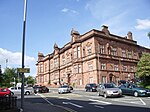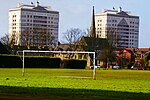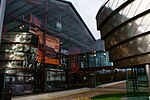Coatbridge College
New College Lanarkshire Coatbridge Campus, previously the independent Coatbridge College was Scotland’s oldest further education college, founded in 1865. The College has over 250 members of staff and around 7,000 students. The College provides further education to the people of North Lanarkshire, in particular those who live in Coatbridge and Airdrie. The 1970s saw Coatbridge College move away from traditional heavy industries and it changed its focus to commerce. In 1984 the College was extended to create computing suites, hairdressing and beauty salons, a refectory area, sports facilities and a large Theatre, which was later to be named the Ian Bannen Theatre. In 2013 there was a proposal to merge Coatbridge College with other further education colleges in North Lanarkshire, but Coatbridge pulled out. However, the merger into New College Lanarkshire (with the former Motherwell College and Cumbernauld College) took place the following year.
Excerpt from the Wikipedia article Coatbridge College (License: CC BY-SA 3.0, Authors).Coatbridge College
Kildonan Street,
Geographical coordinates (GPS) Address Nearby Places Show on map
Geographical coordinates (GPS)
| Latitude | Longitude |
|---|---|
| N 55.8646 ° | E -4.0166 ° |
Address
New Lanarkshire College - Coatbridge Campus
Kildonan Street
ML5 3LQ
Scotland, United Kingdom
Open on Google Maps








